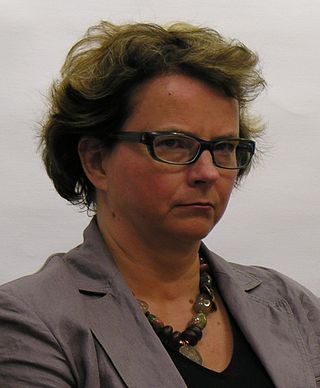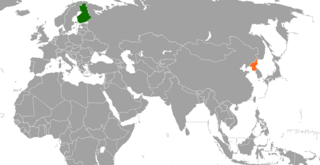
The University of Helsinki is a public university in Helsinki, Finland. The university was founded in Turku in 1640 as the Royal Academy of Åbo under the Swedish Empire, and moved to Helsinki in 1828 under the sponsorship of Tsar Alexander I. The University of Helsinki is the oldest and largest university in Finland with the widest range of disciplines available. In 2022, around 31,000 students were enrolled in the degree programs of the university spread across 11 faculties and 11 research institutes.

Korporatsioon Sakala is a fraternal organization of Estonian higher education students. It was established at the University of Tartu on November 14, 1909.

The Estonian Students' Society is the largest and oldest all-male academical student society in Estonia, and is similar to the Baltic German student organizations known as corporations (Corps). It was founded in 1870 at Tartu. It has over 900 members in Estonia and abroad.
The Student Union of the University of Turku is a body to which, under public law, all University of Turku bachelor's and master's degree students belong. It is among the oldest student unions in Finland. Postgraduate and exchange students may become a member of TYY, but it is not obligatory. Visiting are ineligible to join TYY.

Aalto University is a public research university located in Espoo, Finland. It was established in 2010 as a merger of three major Finnish universities: the Helsinki University of Technology, the Helsinki School of Economics and the University of Art and Design Helsinki. The close collaboration between the scientific, business and arts communities is intended to foster multi-disciplinary education and research.

Laura Kolbe is a Finnish professor of European history at the University of Helsinki. She is also a Helsinki City Council member, representing the Centre Party and the Inspector of Eteläsuomalainen osakunta, student nation representing Southern Finland.

In Finland, student nations are student organisations within which a large proportion of extra-curricular student activity takes place. Though membership is not compulsory, the nations provide one of the main nodes of student social life, along with the faculty-based organisations (ainejärjestöt) at the universities.
Hämäläis-Osakunta is one of the 15 student nations at the University of Helsinki, Finnish-speaking and established in 1653 at The Royal Academy of Turku. In 1828, the academy moved to Helsinki adopting the name university and Hämäläis-Osakunta moved there along with the other nations. HO represents the historic region of Tavastia, so it recruits its members actively there. The building of the nation, built in 1931, is located in Kamppi, on Urho Kekkosen katu.

Eteläsuomalainen osakunta (ESO) is one of the 15 student nations at the University of Helsinki, Finnish-speaking, established in 1905 and it has Uusimaa and Eastern Uusimaa as recruitment regions. Before 1905, Nylands Nation (NN) gathered both Finnish- and Swedish-speaking university students from Southern Finland, but seceded from NN in 1905 to form a similar, but Finnish-speaking nation.
Karjalainen Osakunta (KO) is one of the 15 student nations at the University of Helsinki, Finnish-speaking and established in 1905.

Savolainen osakunta (SavO) is one of the 15 student nations at the University of Helsinki, Finnish-speaking and established in 1905.
Kymenlaakson Osakunta (KyO) is one of the 15 student nations at the University of Helsinki, Finnish-speaking and established in 1933. Kymenlaakson Osakunta's home region is the province of Kymenlaakso in south-eastern Finland and constitutes from the cities of Hamina, Kotka and Kouvola and municipalities of Iitti, Miehikkälä, Pyhtää and Virolahti. The area of the town of Loviisa is a shared region with the Eteläsuomalainen Osakunta.
Östra Finlands Nation (ÖFN) is one of the 15 student nations at the University of Helsinki, Swedish-speaking and established in 1924. The nation is formed to represent the interests of Swedish-speaking students coming from Eastern Finland, nowadays interpreted as the community of Sipoo and any place more to the east of it. While the official language of the nation is Swedish and most members are students at the University of Helsinki, any student studying at any university or applied university in the Helsinki region is welcome as a member.

Varsinaissuomalainen osakunta (VSO) is one of the 15 student nations at the University of Helsinki, Finnish-speaking, established in 1906.
Satakuntalainen Osakunta (SatO) is one of the 15 student nations at the University of Helsinki. It was established in 1654. The nation is headed by the inspector and the curator. The current inspector is Jari Yli-Kauhaluoma, Professor of Pharmaceutical Chemistry at University of Helsinki. The curators are elected by the membership for a term of two years.
Wiipurilainen Osakunta (WiO) is one of the 15 student nations at the University of Helsinki, Finnish-speaking and established in 1653.
Etelä-Pohjalainen Osakunta (EPO) is one of the 15 student nations at the University of Helsinki, Finnish-speaking and established in 1908.

Kustaa Artturi Järviluoma was a Finnish journalist, screenwriter and author. Until 1902, he went by the name Jernström. He is best known for his play Pohjalaisia, which later formed the basis for a popular opera by Leevi Madetoja.

Finland–North Korea relations are bilateral relations between Finland and North Korea.









